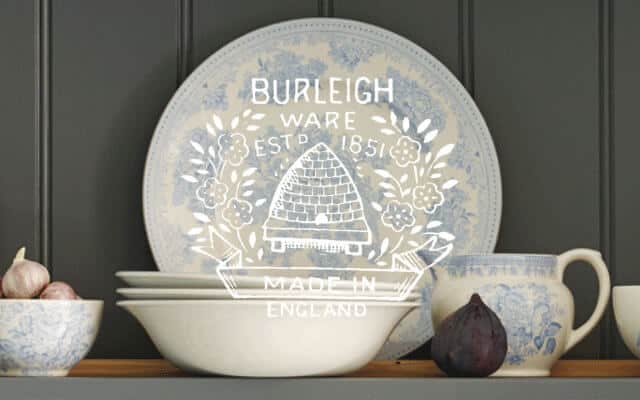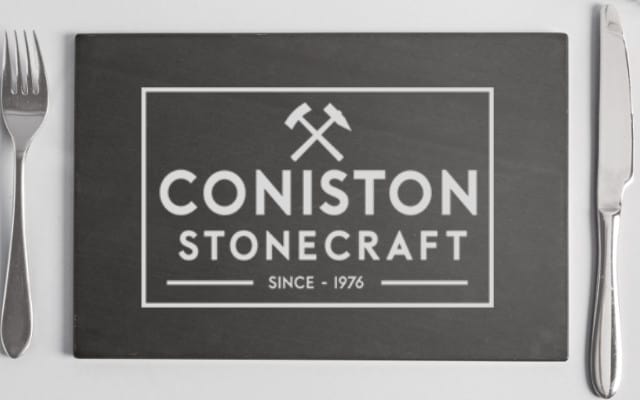Regional British Crafts: STAFFORDSHIRE
World Class Pottery

When an entire region is named after a craft type, it's fair to assume that there is a story or 2 there. The Potteries are a prime example (no points for guessing what this area is known for producing). For around 400 years, Staffordshire has been almost exclusively established as a producer of pottery and ceramics. Famous companies such as Wedgwood, Royal Doulton and Minton were founded and based in the area and have forged a legacy of crafts that has and will continue to stand the tests of time.
The Potteries is an area that enompasses 6 towns and brings them together with a shared skill. Burslem, Fenton, Hanley, Longton, Stoke and Tunstall. These towns eventually amalgamated into the city of Stoke-on-Trent, a city formed from towns sharing a common skill and trade. Working in unison, the 6 towns propelled the Potteries into one of the greatest producers of Pottery and Ceramics in Britain, and maybe the world.
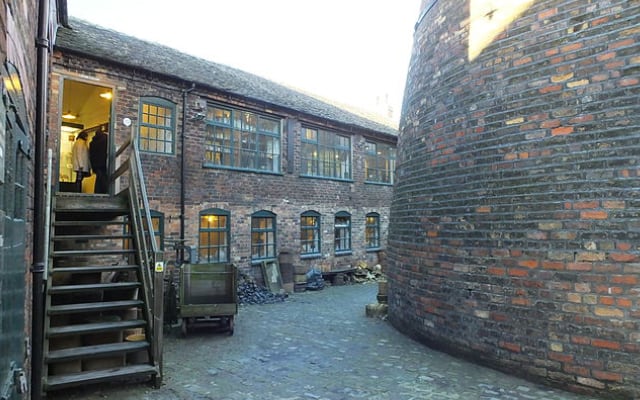
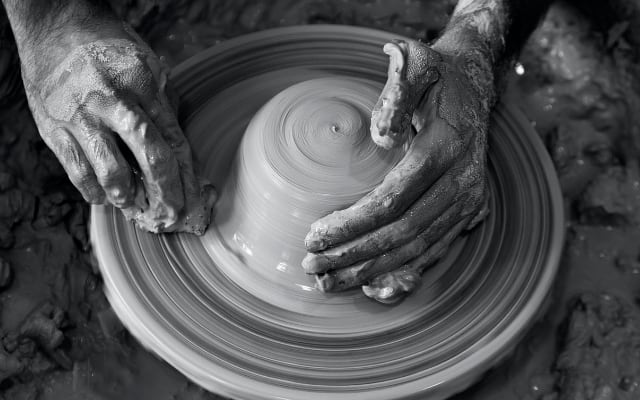
With a local environment rich in coal and clay, both of which were suitable for crafting earthenware (pottery and ceramics), it is no surprise that the industry flourished in Staffordshire. As ingenuity and infrastructure grew and evolved through the ages, so did the craft of working with clay. Developments such as the Trent and Mersey canal allowed import of raw materials to further enhance the crafts, as well as allowing a greater volume of goods to be exported. The import of clay from Cornwall as well as other raw materials allowed the area to begin to produce refined varieties of products such as Bone China and Creamware.
There was a bloom in the industry in the 1720s after a man named John Astbury discovered that by adding heated and ground flint powder to a local red clay, he could produce a much cleaner white or cream pottery. He sourced the flint from either the south coast of England or France, the flint was shipped to Liverpool or nearby ports, then transported by horse to the potteries themselves.
Britain was at this time, behind other centres of manufacture in the world when it came to production of high quality earthenwares. Years of hard and dedicated research, coupled with scrupulous experimentation allowed Britain to rapidly expand the skills of those in Staffordshire who worked with pottery and ceramics, creating some of the finest artists of the medium the world has ever seen. The monumental rise of Staffordshire pottery's global reputation had one man predominantly leading the charge. This man was Josiah Wedgwood, who had cut the first sod (piece of earth) of the canal that allowed the region to further expand its trades of Pottery and Ceramics.
Using modern sciences for the time, as well as engineers and the teachings of his mentor Josiah Spode (the founder of the company Spode), Wedgwood built upon the success of local potters and skills, allowing his methods to produce some of the finest earthenware the world has ever seen. Initially there were many companies who produced a vast array of different types of pottery such as tableware, decorative pieces and items for industrial usage.
Wedgwood also pioneered the way we market products today, with his revolutionary ideas such as; money back guarantee, free delivery and having his marketing done by the “influencers” of the era. By allowing his products to market themselves and by having people of influence seen with his products, they would become more desirable and the memetic nature of this marketing would continue to spread. These ideas were so ahead of the time and worked to such an extent that we still use them today. Wedgwood was more than a crafter of fine artistic and luxury pottery, he is considered today the Godfather of modern marketing. A legacy beyond anything he would have expected.

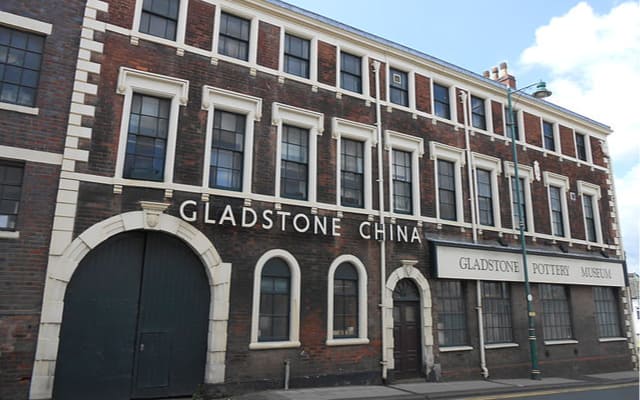
All of the main types of pottery were all produced in Staffordshire at this time, earthenware, stoneware and porcelain, but alongside this, varieties of advanced manufacture began to grow. Bone China was developed alongside Jasperware, as were revolutionary methods of printing onto products, both transfer printing and glazing. While most of the produce of the area was mid range in terms of pricing, there was export of more exceptional and sought after items that were considered some of the finest and most expensive of the time.
By the end of the 18th century Staffordshrie had bloomed into Britain's largest producer of ceramics and pottery, regardless of other centres of similar production around the world at this time. With markets transporting Staffordshire produced ceramics and pottery around the world, forging a legacy of quality that stands today, even though the industry has declined significantly.
The industrial revolution brought a thriving industry to the area with factories and workshops popping up in many of the areas between the original towns. As machines had not become widely available to the work-a-day individuals who operated their own smaller pottery kilns and businesses. The handmade nature of these smaller sites, as well as individual nuance and skill, meant that no 2 of the bottle shaped ovens used for firing the pottery were alike. The larger scale ‘bottles’ used in the factories were similarly unique depending on the requirements and specifications of the factories that used them, leading to a set of similar yet unique factories producing the same product.
But as with many of the traditional methods of crafts in history, industry and the advent of coal power and internal combustion meant that the older way fell out of fashion as more efficient and cost effective means of production began to rise in use. Railways began to replace horse and cart and even the landscape itself began to change, this can be seen in paintings from the time such as The Pottery, an 1842 watercolour by John Salmon. Canals began to become more and more important to the transport of large quantities of goods for use in the factories as well as exporting the goods after production was finished.
A prime example of the quality and pedigree of poetry produced in the area is the Stoke-on-Trent based company, Burleigh. Founded in 1851 under the name of Burgess & Leigh they have been producing exceptional quality, hand crafted fine pottery for 170 years. With a wonderful selection of designs, styles and bold command of colour, it is no surprise that Burleigh are held in such high esteem. The last remaining producer of earthenware that uses their underglaze tissue transfer technique, they pride themselves on the designs for their wares. A true standard of how craftsmanship should be handled, with pride and care. With a healthy handful of love for the craft too.
Pottery and ceramics are something the majority of us use on a near daily basis, mostly for practical uses but others have been designed for decorative purposes. Wedgwood is a good example of decorative pottery designed for decorative purposes, the exceptional quality and beauty of the pieces, Wedgwood and others like it shows the skill of the craftsman who made it. Practicality and beauty, the yin and yang of pottery and ceramics. It's hard to argue that good quality products of this variety can really make a difference and make a great conversation piece, but we mustn’t forget the legacy of this industry from a corner of our island home.
We at Sir Gordon Bennett are glad to say however, that the demand for handcrafted and high quality ceramics and pottery is on the rise, much like other similar traditional crafts. British craftsmanship is something to be treasured and respected, when using a piece of pottery made in a method similar to the ways of old, there’s a connection between the ages with the piece, your ancestors may have used a very similar item in their lives. That is something that can’t have a price tag placed on it, a bond through craftsmanship rather than price or heritage. Truly a way to celebrate British craftsmanship.


